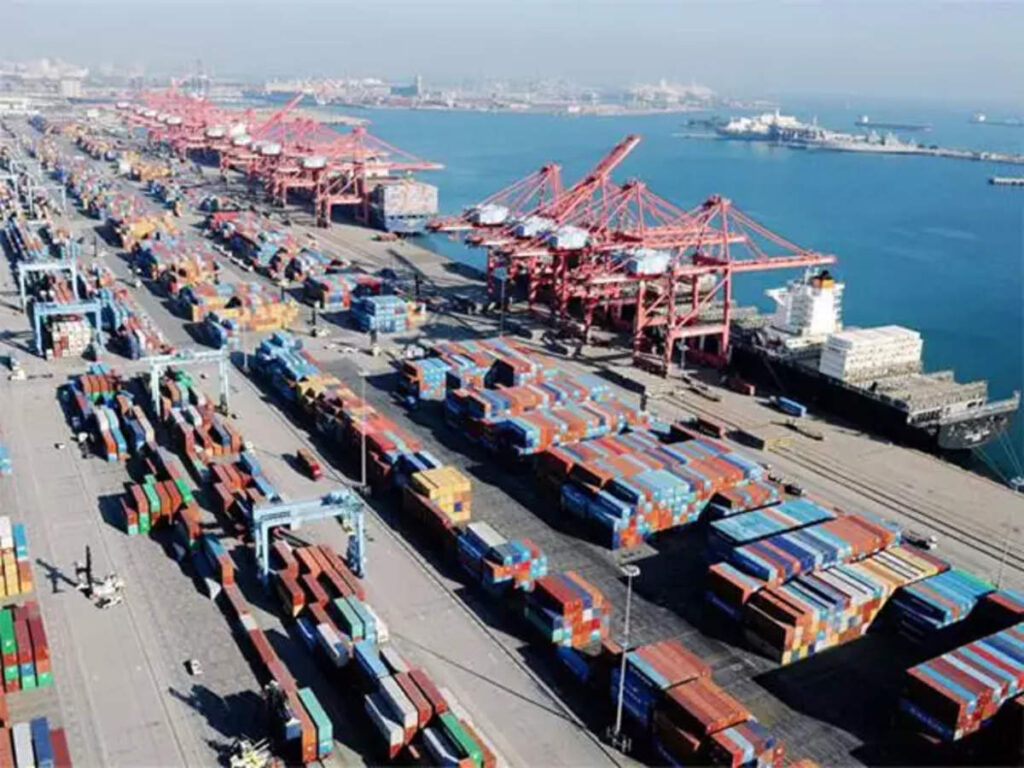By K Raveendran
There is a marked slowdown in the containerized exports from India, attributed mainly to a decline in consumer demand for Indian goods in the US, EU and the UK markets, according to data from Container xChange, a leading online platform for container logistics. This trend has impacted the volume of orders received by Indian exporters, resulting in a notable setback in the country’s export performance.
India has been actively promoting a pro-export agenda, prioritizing the growth of exports and driving economic momentum. However, data from Container xChange indicates the efforts have not produced the desired results.
In April, the first month of the fiscal year 2023-24, Indian merchandise exports experienced a significant decline of 13 percent compared to the previous year, amounting to US$35 billion, as per data provided by the Ministry of Commerce & Industry of India. This decline is the sharpest monthly drop observed in the past three years, indicating a notable setback in export performance.
The average container price for 40 HC containers in India has slowed down as compared to last year same time. With a 43.4 percent year-on-year dip from $4195 in April 2022 to $2374 in April 2023, the prices have almost halved. Similarly, the 20 DC containers average container price saw a decline of 41 percent from $2213 in April 2022 to $1305 in April 2023.
But there has been a significant surge in the number of inbound containers at Indian ports during the period of January to May 2023. The platform’s Container Availability index (CAx) consistently exceeded the 0.80 threshold, indicating a notable rise in inbound container numbers. This trend can be attributed to a decline in demand for outbound containers, resulting in higher CAx values and overcapacity of containers at specific ports.
The surge in inbound containers has been accompanied by significant changes in average pickup charges on the India-US trade route. These charges have experienced a substantial increase, reaching $425 in April 2023, compared to $11 in September 2022. This increase signifies a greater demand for containers from India and highlights the strengthening economic relationship between India and the United States. This could well be corroborated by the rising imports, causing a higher number of container equipment entering the ports leading to overcapacity of containers.
Average pickup charges on the India-US trade route have seen a substantial increase in the past three quarters, currently at $425 in April 2023 sliding up from 11$ in September 2023. This indicates a greater demand for containers from the country.
This can be corroborated by the strengthening economic relationship between India and the United States, resulting in the United States emerging as India’s largest trading partner in the fiscal year 2022-23. According to provisional data from the Commerce Ministry, bilateral trade between the two countries witnessed a significant increase of 7.65 percent, reaching $128.55 billion in 2022-23 compared to $119.5 billion in the previous fiscal year. This marks a notable growth from $80.51 billion in 2020-21. The data also reveals that exports to the US experienced a moderate rise of 2.81 percent to $78.31 billion in 2022-23 compared to $76.18 billion in 2021-22, while imports surged by approximately 16 percent to $50.24 billion.
Further, according to the Ministry of Ports, Shipping and Waterways, the major ports in the country witnessed a record-breaking cargo handling of 795 million metric tonnes in the fiscal year 2022-23. This marked a significant increase of 10 per cent compared to the previous year’s cargo volume.
Going forward, supply chain experts in the industry remain optimistic about the future as they forecast a rebound in export growth starting from July this year, particularly driven by fresh orders and bookings in preparation for the upcoming festival and new year season. This positive outlook is expected to contribute to the overall growth of the Indian economy and reinvigorate containerized exports.
The RBI has projected a sustained growth momentum for India in 2023-24, thanks to easing inflationary pressures and other positive developments in the economy, while at the same time highlighting the downside risks stemming from slowing global growth, protracted geopolitical tensions and a possible upsurge in financial market volatility following new stress events in the global financial system.
In the external sector, the current account deficit is expected to remain moderate, drawing strength from robust services exports and the salubrious impact of moderation in commodity prices of imports. (IPA Service)




 No Real Truce Is Ready At Ending Gehlot-Pilot Infighting In Rajasthan Congress
No Real Truce Is Ready At Ending Gehlot-Pilot Infighting In Rajasthan Congress 